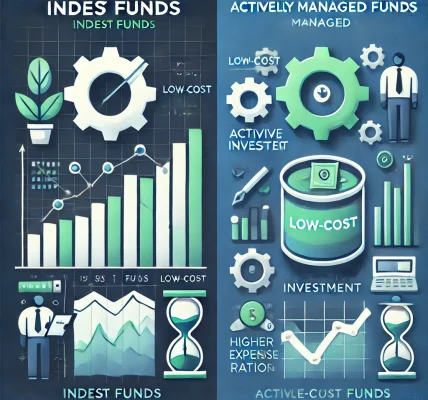Introduction
Mutual fund investors often seek high-growth opportunities, and two specialized categories that attract significant interest are sectoral funds and thematic funds. These funds allow investors to capitalize on specific market trends, but they come with distinct risks and rewards. Understanding their differences is crucial before investing.
In this guide, we will explore the key distinctions, potential risks, and rewards associated with sectoral and thematic mutual funds to help you make an informed investment decision.
1. What Are Sectoral and Thematic Mutual Funds?
A. Sectoral Mutual Funds
Sectoral mutual funds invest exclusively in a particular industry or sector, such as banking, technology, pharmaceuticals, or energy. These funds aim to capitalize on growth opportunities within that specific sector.
Examples of Sectoral Funds:
- Banking and Financial Services Funds
- Technology Funds
- Healthcare & Pharma Funds
- Infrastructure Funds
B. Thematic Mutual Funds
Thematic mutual funds invest in companies that follow a specific investment theme, which may span multiple sectors. Themes can be based on long-term economic trends, government policies, or global opportunities.
Examples of Thematic Funds:
- ESG (Environmental, Social, and Governance) Funds
- Digital Transformation Funds
- Consumption & Lifestyle Funds
- Emerging Markets Funds
2. Key Differences Between Sectoral and Thematic Mutual Funds
| Feature | Sectoral Funds | Thematic Funds |
|---|---|---|
| Focus | Single sector | Multiple sectors under a common theme |
| Diversification | Low (highly concentrated) | Moderate (spreads risk across sectors) |
| Risk Level | High (sensitive to industry trends) | Moderate to high (depends on theme viability) |
| Return Potential | High in a growing sector | High if theme performs well across sectors |
| Investment Horizon | Long-term | Long-term |
3. Risks Involved in Sectoral and Thematic Mutual Funds
A. Risks in Sectoral Funds
- High Volatility: If the sector faces a downturn, investments can suffer significant losses.
- Lack of Diversification: Since these funds focus on a single sector, they are more vulnerable to industry-specific challenges.
- Regulatory Risks: Government policies or regulations affecting the sector can impact returns.
B. Risks in Thematic Funds
- Broad Market Risks: If the overall market is down, even strong themes may underperform.
- Execution Risk: A theme might not materialize as expected, affecting returns.
- Long Gestation Period: Some themes take time to show results, requiring patience from investors.
4. Potential Rewards of Investing in Sectoral and Thematic Funds
A. Sectoral Fund Rewards
- High Growth Potential: If a sector is in a strong uptrend, it can provide exceptional returns.
- Expert-Driven Investment: Fund managers conduct deep research into the chosen sector.
- Aligned with Economic Trends: Sectors like technology and healthcare may experience rapid growth.
B. Thematic Fund Rewards
- Diversified Exposure: Investing across different sectors within a theme reduces risk compared to sectoral funds.
- Future-Oriented Investment: Themes such as ESG or digital transformation have long-term growth potential.
- Global Opportunities: Many themes allow investment in international markets, expanding diversification.
5. Who Should Invest in These Funds?
Invest in Sectoral Funds If:
- You have in-depth knowledge of a specific sector.
- You are willing to take high risks for potentially high rewards.
- You have a long-term investment horizon (5+ years).
Invest in Thematic Funds If:
- You believe in a broader investment theme spanning multiple sectors.
- You seek diversification but still want focused exposure.
- You are comfortable with medium-to-high risk and a long-term horizon.
6. How to Choose the Right Fund?
Before investing, consider the following:
- Market Trends: Evaluate whether the sector or theme is expected to grow in the coming years.
- Fund Performance: Analyze historical returns and compare them to benchmarks.
- Fund Manager Expertise: A strong track record in handling sectoral or thematic funds is crucial.
- Expense Ratio: Higher expense ratios can reduce net returns.
- Macroeconomic Factors: Government policies, global market trends, and economic conditions impact these funds.
7. Conclusion: Which One Should You Choose?
- If you have high risk tolerance and deep conviction in a specific industry, sectoral funds might be suitable.
- If you want diversified exposure under a single investment idea, thematic funds can offer balanced opportunities.
- Both fund types require a long-term perspective and should ideally complement a diversified investment portfolio.
Investing in sectoral or thematic mutual funds can be rewarding, but understanding their risks and aligning them with your financial goals is crucial for success.
Disclaimer:
This article is for informational purposes only and should not be considered financial advice. Please consult a certified financial advisor before making any investment decisions.




